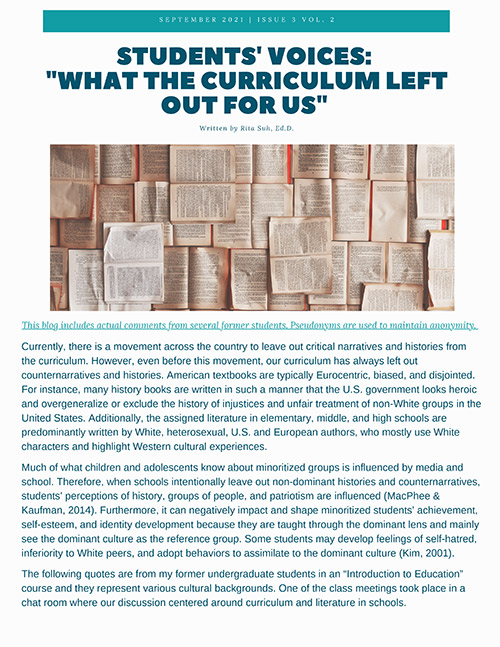By Rita Suh, Ed.D., Co-Director of the Culture & Equity Project
Culture & Equity Blog
Currently, there is a movement across the country to leave out critical narratives and histories from the curriculum. However, even before this movement, our curriculum has always left out counternarratives and histories. American textbooks are typically Eurocentric, biased, and disjointed. For instance, many history books are written in such a manner that the U.S. government looks heroic and overgeneralize or exclude the history of injustices and unfair treatment of non-White groups in the United States. Additionally, the assigned literature in elementary, middle, and high schools are predominantly written by White, heterosexual, U.S. and European authors, who mostly use White
characters and highlight Western cultural experiences.
Much of what children and adolescents know about minoritized groups is influenced by media and school. Therefore, when schools intentionally leave out non-dominant histories and counternarratives, students’ perceptions of history, groups of people, and patriotism are influenced (MacPhee & Kaufman, 2014). Furthermore, it can negatively impact and shape minoritized students’ achievement, self-esteem, and identity development because they are taught through the dominant lens and mainly see the dominant culture as the reference group. Some students may develop feelings of self-hatred, inferiority to White peers, and adopt behaviors to assimilate to the dominant culture (Kim, 2001).

